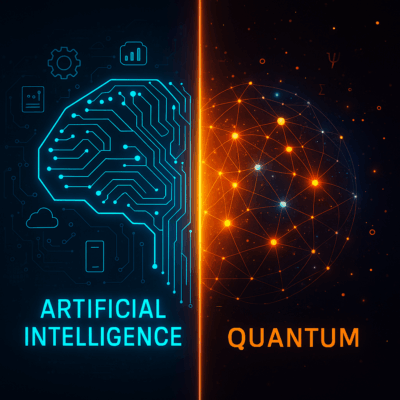The Evolution of Technology Integration and Blockchain: A Retrospective

40,745 Active Engagements
Introduction
The field of technology integration has evolved tremendously over the past few decades, shaping the way we conduct business, manage data, and interact with digital services. Among these advancements, the development of blockchain technology stands out for its potential to revolutionize the way we approach data security, transparency, and decentralized processes. In this article, we will explore the key stages of this evolution, from the earliest days of Electronic Data Interchange (EDI) to the current era of Blockchain 4.0.
1980s – Data Integration and Electronic Data Interchange (EDI)
The 1980s marked the inception of data integration via Electronic Data Interchange (EDI). During this period, EDI was used for document sharing between connected machines, typically through private networks, and for establishing standardized data sharing protocols.
1990s – Functional Integration
The 1990s were characterized by functional integration, with many companies beginning to consolidate disparate systems to streamline business processes. A notable development of this era was the emergence of Enterprise Resource Planning (ERP) systems, which sought to create a cohesive, integrated platform encompassing various business functions.
2000s – Service Integration
The turn of the millennium brought about a new era of service integration. Here, the implementation of Enterprise Service Bus (ESB) architectures facilitated sophisticated interactions between businesses and consumers via the internet, marking a significant leap in the functionality and standardization of web-based services.
2008 – Blockchain 1.0: Decentralization of Monetary Transactions (e.g., Bitcoin)
This time period introduced the world to the concept of decentralized financial transactions through the advent of Bitcoin. This marked the genesis of blockchain technology, where transactions were executed via a decentralized ledger using consensus mechanisms to ensure integrity and security.
2010s – Microservices Integration and the Rise of XaaS (Anything as a Service)
The following decade saw the rise of Microservices Integration and XaaS. The Representational State Transfer (REST) architectural style emerged as a more flexible, lightweight alternative to ESB, fundamentally altering the landscape of web computing. This era also witnessed the ascension of XaaS, signifying an expanding array of cloud-based services.
2015 – Blockchain 2.0: Smart Contracts (via Ethereum)
Ethereum, launched in 2015, introduced the concept of smart contracts—self-executing contracts with the agreement terms directly written into lines of code. This development enabled complex automated interactions and facilitated the creation of decentralized applications (DApps), igniting new use cases like decentralized finance (DeFi) and supply chain management.
Mid-to-Late 2010 – 2020 Blockchain 3.0: Scalability, Interoperability, and Privacy
During this phase, blockchain technology started to mature, addressing some of the limitations of earlier versions. Projects like Cardano, Polkadot, and Cosmos worked towards enhancing scalability, interoperability, and privacy in blockchain networks, paving the way for more robust and diversified applications of the technology.
2020s – Blockchain 4.0: Integration and Expansion
The current era, often referred to as Blockchain 4.0, is witnessing rapid advances in cryptography, innovative distributed ledger technologies (DLT), and smart contract functionalities. These developments are driving a shift towards decentralized architectures and distributed business models, underpinning the future of shared digital ecosystems.
Conclusion
The evolution of technology integration and blockchain demonstrates a continual quest for efficiency, interoperability, and security in digital interactions. As we move forward, the emergence of Blockchain 4.0 promises to catalyze further transformations, redefining the boundaries of what’s possible in our digital landscape. Stay tuned to Citanex.com for more insights and updates on this exciting journey.
Tokenization of Everything (Coming Soon)
Smart Contracts (Coming Soon)
References
MIT Professional Education – Blockchain Technology
Gupta, V. (2017, 02 28). A Brief History of Blockchain. Retrieved from Harvard Business Review: https://hbr.org/2017/02/a-brief-history-of-blockchain
Max Moeller. (2022, April 04). The evolution of blockchain: Transactions, contracts and applications. Retrieved from cointelegraph.com: https://cointelegraph.com/explained/the-evolution-of-blockchain-transactions-contracts-and-applications



